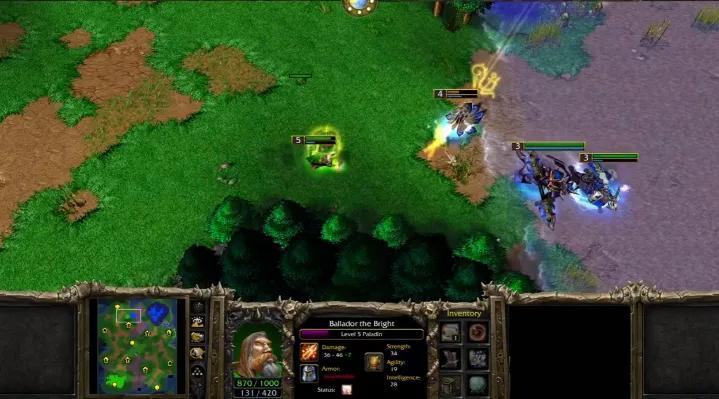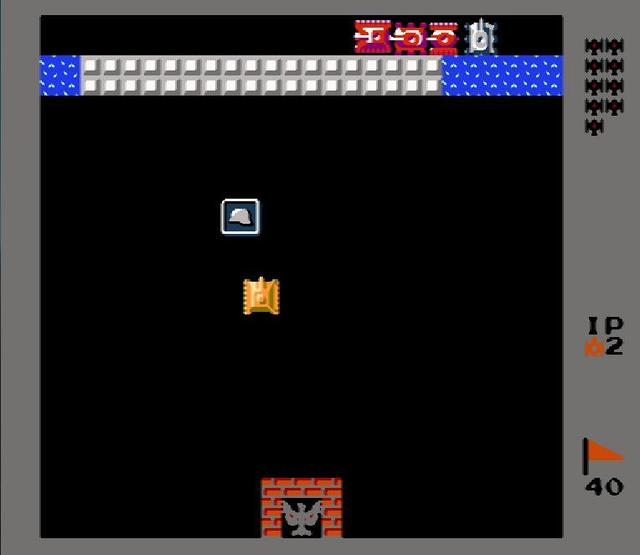Bill Gates’ favourite game that launched an era in 40 years

In 1999, Bill Gates wrote a moving tribute to the Wright brothers, describing their wing invention as “the World Wide Web of its time” and giving people a global perspective. This set the scene for Microsoft’s subsequent acquisition of Flight Simulator.And, like the Wright Brothers’ original flying machine, Flight Simulator is a game that has long been about more than just ‘flying’ itself, it is about the shift in perspective that ‘flying’ brings. Flight Simulator promised to put the whole world into your computer, and it delivered on that promise. That’s why it has become the world’s best-selling flight simulation series. Its latest version has sold over two million copies.
Although 2022 marks the 40th anniversary of the launch of Microsoft Flight Simulator, it actually predates its official release in 1982 and is still in active development. This makes it the second oldest video game.
The core of the Flight Simulator series of games is not ‘gamification’ but the ‘technical magic’ it uses to simulate the experience of flying and the ground beneath your feet. Its focus on ‘realistic descriptions’ is a reflection of the background of the game’s developers.
01 A passion for flying.
Bruce Artwick was at the University of Illinois at Urbana-Champaign, studying electrical engineering, but he still made time to pursue a dream that many teenagers have thought about but few have achieved: he learned to fly a plane. It was also during the university’s flight training program that he met Stu Moment, who would later become his business partner.
In 1976, Atwick wrote his master’s thesis on a flight simulator he designed to run on a PDP-11 microcomputer from Digital Equipment Cooperation. It was able to demonstrate in three dimensions at nine frames per second, which was remarkable for its time.
Atwick then found a job at Hughes Aviation in California, while continuing to work on 3D graphics in his free time.
Stu Moment and Bruce Artwick, the two founders of Flight Simulator Stu Moment.
In 1977 he wrote an article for Kilobaud describing his creation of the ‘sunLogic 3D micrographics package’, which combined 3D technology with a microcomputer equipped with the popular Motorola 6800 microprocessor. Given the very large number of readers who were very interested in it, Atwick wanted to seek help in turning the software into a business. So he reconnected with Stu Morment and together they formed sunLogic.
Dave Denhardt was the second employee of sunLogic. According to his recollection, the company’s early years were driven by Atwick’s 3D software, which was updated by the rise of microcomputers. What Bruce and Stu were selling was basically a 3D software package for microcomputers,” says Denhardt. “Tandy’s TRS-80 was a microcomputer, and I think the Apple II was around by then”.
Atwick often said in his talks that sunLogic’s software could be used for ‘flight simulation’, a suggestion that left the audience in awe. A view of soaring above the earth through a computer? Most people have never seen anything like it. Inspired by the audience, Atwick decided to make it a reality.
The evolution of Flight Simulator, from left to right, on Apple II, Atari and Microsoft Dos|JOSEF HAVLIK and Microsoft.
So, at the end of 1979, Flight Simulator was launched on the Apple II and TRS-80, with wireframe graphics, and a single-digit frame rate. It did not depict real airspace or modern aircraft. Instead, the player flies a First World War-era biplane based on the famous Sopwith Camel. But its first-person 3D visuals represented the state of the art at the time, predating even more famous titles such as Atari’s Battlzone.
Early on, Bruce saw a potential market for Flight Simulator,” says Denhardt. When microprocessors became commonplace, Bruce’s opportunity came along. As Bruce said, “If I put this flight simulator idea of mine on a cheaper computer and let it run, there would be a market for it”.
Bruce was right, and in September 1982 Computer Gaming World magazine listed Flight Simulator as the fourth best-selling product to date.
IBM had been keen to showcase its PC platform, so it approached sunLogic to put Flight Simulator on its new hardware. At the same time, Microsoft, which was deeply involved in developing the IBM PC DOS, soon called with a similar request, but with better terms.
In the end, Microsoft and sunLogic entered into a partnership and took the licence for Flight Simulator, although Bruce could continue to own his company for years to come.
At the end of 1982, Microsoft Flight Simulator was officially released and continued to be optimised in the following months, reflecting the advances in microcomputers. Page animations went from monochrome to colour (on PCs with appropriate hardware) and the display refresh rate was increased to 15 frames per second. One reviewer described the experience of Microsoft Flight Simulator as ‘very smooth’.
In the game, players can fly a Cessna 182 in four real-world locations, including Chicago and Seattle.
For the first time ever, one can realise the dream of being a pilot at home, using a computer – flying a real aircraft across real terrain, taking off and landing on a model of a real airport in the game.
This realism was extended to the Flight Model, which used an effective technique: lookup tables. This was because the early IBM computers could not support real-time calculations of the forces on the aircraft. But fortunately, the aircraft manufacturers could help with the answers, and this gave sunLogic a basis on which it could be extended.
Basically, you type in a requirement and the simulator can simply do a lookup and output the result,” says Denhardt. “Now, you don’t have a huge lookup table because of resolution and memory limitations, but you can have a medium-sized or even small lookup table and you can modify it between data points”.
With the flight model, sunLogic expands the scope of the simulation.
Microsoft Flight Simulator 2.0 (1984) simulated the entire United States, Microsoft Flight Simulator 3.0 (1988) added the Gates Learjet 25 and a large number of airports, and Microsoft Flight Simulator 4.0 (1989) added random events, including weather.
The ongoing graphical evolution of Flight Simulator from 1995 to 2022|JOSEF HAVLIK and Microsoft.
In 1993, Microsoft Flight Simulator 5.0 introduced a new killer feature: the textures system, which turned the look of the game visually upside down. Prior to this, the land between airports was represented by patches of colour, green for forests, grey for cities and blue for water.
Now, the textures system provides new details. From Microsoft Flight Simulator 5.0 onwards, these details are based on satellite images. As a result, Flight Simulator will be the first opportunity for many people to see satellite images in real-time 3D software.
Flight Simulator’s first decade on the market has been a period of steady rise. However, there was a constant undercurrent behind it, with Atwick and Moments often at odds. By around 1980 they were working separately, with Morment during the day and Atwick at night. The split eventually became permanent in the late 1980s, when Artwick left sunLogic to form the Bruce Artwick Organization (BAO), and 1988’s Flight Simulator 3.0 became the last version to be attributed to sunLogic.
It was, perhaps, because of this split that Artwick decided to sell Flight Simulator to Microsoft in 1995. Although, this could not be confirmed by Atwick, employees in the know revealed that it was a sudden but not surprising decision, even though Atwick had spent almost twenty years working on the business, and even though the team had its differences with Microsoft.
Paul Donlan was group manager of BAO in the year before Microsoft’s acquisition. I think ultimately Microsoft wanted absolute control of Flight Simulator, rather than Atwick holding it”, he says. “We’re a small company and we play by the rules of a small company, and that sometimes bothers the people at Microsoft. It’s easy for us to say no, and it’s very frustrating for them”.
02 Microsoft in power.
With the introduction of the Windows 95 operating system, a new chapter in the Microsoft Flight Simulator began. At the flashy launch of Windows 95, Jay Leno relied on media properties to convince consumers that ‘it was time to retire MS-DOS computers and buy Windows computers’. (Incidentally, it was this push that brought the game to my attention: Microsoft Flight Simulator for Windows 95 came bundled with the first Windows 95 computer in my house).
Bringing Flight Simulator to Windows was no small feat. The game was deeply rooted in MS-DOS and the increasingly arcane software development practices of the early 1980s. windows 95 could theoretically run MS-DOS applications, but that didn’t suit Flight Simulator.
In fact, at this point, Flight Simulator still doesn’t really use Microsoft’s operating system: you stick a floppy disk in the floppy drive and it boots up,” explains sunLogic’s Dan Hart. “I think Flight Simulator runs on Microsoft’s minimal MS-DOS, but it just boots up and runs, and then ignores MS-DOS”. The team even boycotted an early version of Windows because they feared it would slow down Flight Simulator.
But now that Microsoft was in charge, failure was not an option!
Paul Donlan recalls that ‘when we got into Flight Sim 95, there was a huge port of call’. He credits Mike Schrott, now a software engineer for Lockheed’s Prepar3D simulation platform, with playing the role of point man. “I can’t say how important it was for everything, but a lot of the code was moved from Assembly language to C, and the amount of work involved was huge”.
Bringing Flight Simulator to Windows was a first attempt at Microsoft’s labour of love culture. It was also only partially successful, as the reviewers found performance problems on even the fastest home computers. As it turned out, the Flight Simulator team’s concerns about Windows’ ability to handle ‘simulations’ were not unfounded. Nonetheless, Flight Simulator was an essential ‘gimmick’ for Microsoft to extend the media reach of Windows 95.
The team doubled down on Flight Simulator 98’s visuals, pushing the boundaries again with the use of 3D hardware acceleration. This work took a long time to test the various 3D accelerators, which had not yet formed a common standard,” said Hal Bryan, head of testing. Fortunately, these tests paid off somewhat, with Flight Simulator 98 putting to rest the complaints of critics about false performance.
Users also benefited from the rise of the CD-ROM and DVD-ROM media, which provided scope for more detailed textures, more terrain data, and faster data transfer speeds in the game.




